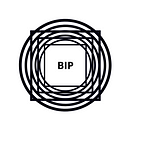Loon
Unfortunately, the Loon project has ended since January 2021. Based on the company’s medium post: “…haven’t found a way to get the costs low enough to build a long-term, sustainable business.” We still see it as an interesting project from which a lot can be learned. This article was created before the company announced the end of its journey, therefore, we are publishing this article as we have written it. Hope you enjoy it.
Loon company is a spin-off from the Google X company, under Alphabet. Its mission is to connect people everywhere. You may think that doesn’t sound special, however, if we say they are trying to make this happen with balloons, you may raise your eyebrows.
The purpose of the balloon is to receive and send forward the signal in the places where cell towers cannot be built. Imagine that you live somewhere in the jungle of Africa or in the wilderness in Australia. How the heck will you get your signal? By standard conventions, really hard.
That is why Loon company is putting floating cell towers 20 km above the ground in the stratosphere. Because they are so high up, way beyond living creatures, clouds, and airplanes, this creates pros and cons. Obviously 20 km above Earth is freezing cold: up to minus 80 degrees Celsius. However, there are no storms up there and therefore, they cannot be destroyed by hurricanes.
You may think, OK, but is this really important. Well just think about your daily life without internet access. Not only that your life would be much more boring after having access to the Internet, but also, you wouldn’t have access to all the infrastructure build on top of it… The entertainment, the healthcare, the information access, and on and on we can go.
That is why Loon is partnering with other telecom companies. The latter provides the ground cell towers and the former extends telecom’s services into the places where the ground cell towers cannot reach. Perfect combination.
But not only that the company is providing LTE signals to the places where that wasn’t possible before, they are also providing the signal where signal connectivity was lost. In 2017 Peru was experiencing extreme rain and floods. More than 800 provinces were declared to be in a state of emergency. In these difficult times, we take the option to call for help for granted. However, usually, the infrastructure is most likely to be damaged or even destroyed. In Peru’s case, Loon partnership with telecommunication company Telefonica. They were able to establish internet connectivity that could send and receive 30 million WhatsApp messages, or 2 million emails. That must have saved lives.
Now let’s talk about some facts:
Balloons are two parted. The inner part is filled with helium and the outer is filled with air. They are standing 15 m across and 12 m tall when fully inflated. At the bottom of each balloon, there is a 10 kg electrical box. It contains a circuit board, radio antennas, a custom-made air pump, and a battery. On top of that box, there are solar panels, which absorb solar energy for everything to function. The custom-made pump releases or pumps air into the outer balloon, therefore the balloon can go up or down into different wind currents. That’s is how they navigate in the sky. The longest flight duration record so far is 312 days. The balloon has traveled across the whole globe!
So, what will the future of Loon look like? Surely a lot of tests and failures, lots of partnership, and in the end innovation.
